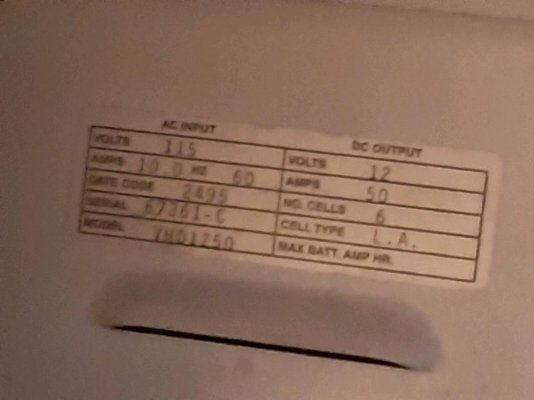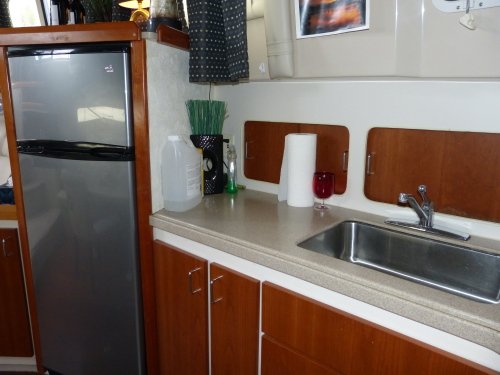kthoennes
Guru
- Joined
- Oct 11, 2013
- Messages
- 2,474
- Location
- USA
- Vessel Name
- Xanadu
- Vessel Make
- Mainship 37 Motor Yacht
Sorry to start yet another refrigerator thread, but our old Norcold DE 461 died. Original to the boat, 1996, so I guess I can't be too annoyed, worked for 25 years. I did try some of the advice on past threads for getting it working again, but I'm giving up, and it's rusting out around the edges anyway. By the time I add shipping and tax and incidental installation stuff I'm not in the mood to spend $1,500 or more on the DE 061, so I finally found a 110v AC household fridge that matches the cabinet size within an inch or two all around. The LG LRONC0705V, single-door, 6.9 cu ft. I can order it through Home Depot for $499, free shipping, delivered to my house. Door swings the wrong way and it can't be changed, but with our galley layout that doesn't matter much. The dimensions are very close to the Norcold but slightly smaller all around so I don't have to do a big carpentry project, maybe just some trim or retainer pads to hold the new one securely and make it look pretty. I'll also have room inside the cabinet to add a vent fan this time. But that brings me to power...
I can't find the draw (watts) for that LG anywhere, I'll have to figure that out when I get it, but the Energy Star label shows it's rated at 220kWh per year, which is relatively low. The 110v connection will be easy of course, for when we're on shore power. And then we'll need a DC to AC inverter for 12v operation, but all that's a lead-up to: As long as I'm doing all this, it's probably time to upgrade the battery charger. We have a Dytek "Marine Automatic" battery charger and I've pasted the spec plate below. Still works well as far as I know and we've never had any problems with it, but I assume it's at least 25 years old too (or 26 years old, if that date code means 1995). Although I get the basics, I'm really not good at electrical, my brain just doesn't work that way, so I defer to the many experts on here who know more about electricity than Nikola Tesla ever knew:
What new battery charger should I buy?
I can't find the draw (watts) for that LG anywhere, I'll have to figure that out when I get it, but the Energy Star label shows it's rated at 220kWh per year, which is relatively low. The 110v connection will be easy of course, for when we're on shore power. And then we'll need a DC to AC inverter for 12v operation, but all that's a lead-up to: As long as I'm doing all this, it's probably time to upgrade the battery charger. We have a Dytek "Marine Automatic" battery charger and I've pasted the spec plate below. Still works well as far as I know and we've never had any problems with it, but I assume it's at least 25 years old too (or 26 years old, if that date code means 1995). Although I get the basics, I'm really not good at electrical, my brain just doesn't work that way, so I defer to the many experts on here who know more about electricity than Nikola Tesla ever knew:
What new battery charger should I buy?


